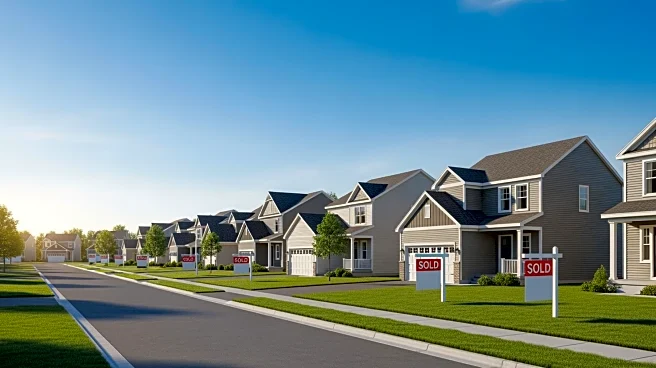What's Happening?
Recent data from Realtor.com indicates a decline in home sale prices in Lawrence County, Pennsylvania. The median selling price for single-family homes in the county fell by 4.5% in August, reaching $157,450
compared to $164,900 in July. Despite this monthly decrease, the median price has risen by 29.3% since August 2024, when it was $121,750. Condominiums and townhomes also saw a significant drop, with prices decreasing by 12.6% from July to August, settling at a median of $209,000. Across Pennsylvania, the median sales price for single-family homes decreased by 1.2% from July to August, while the price for condominiums and townhomes fell by 1.8%. The total value of recorded residential home sales in the state decreased by 12% from July to August.
Why It's Important?
The decline in home prices in Lawrence County reflects broader trends across Pennsylvania, impacting potential buyers and sellers. Lower home prices can make the market more accessible to first-time buyers, but may also affect homeowners looking to sell at a profit. The decrease in sales prices could indicate a cooling housing market, which may influence economic activity in the region. Additionally, the drop in recorded sales suggests a potential slowdown in real estate transactions, which could have implications for local businesses and services reliant on housing market activity.
What's Next?
As the housing market continues to adjust, stakeholders such as real estate agents, homeowners, and potential buyers will need to monitor trends closely. The ongoing changes in home prices may prompt adjustments in pricing strategies and marketing efforts by real estate professionals. Homeowners may reconsider selling plans if prices continue to decline, while buyers might find opportunities to purchase homes at lower prices. The broader economic conditions, including interest rates and employment levels, will likely play a role in shaping future market dynamics.
Beyond the Headlines
The fluctuations in home prices may have deeper implications for community development and local government planning. As property values shift, tax revenues could be affected, influencing public services and infrastructure projects. Additionally, changes in the housing market can impact demographic trends, as affordability influences migration patterns and population growth. Understanding these dynamics is crucial for policymakers and community leaders aiming to foster sustainable development.











